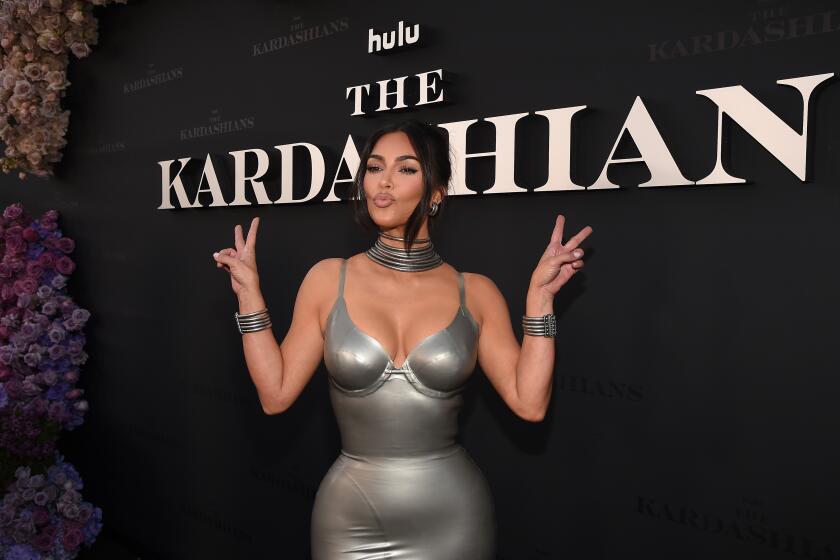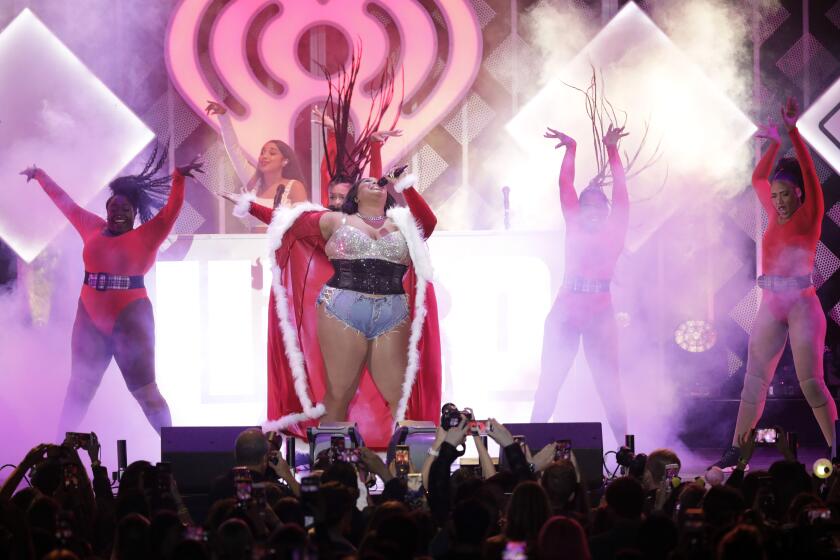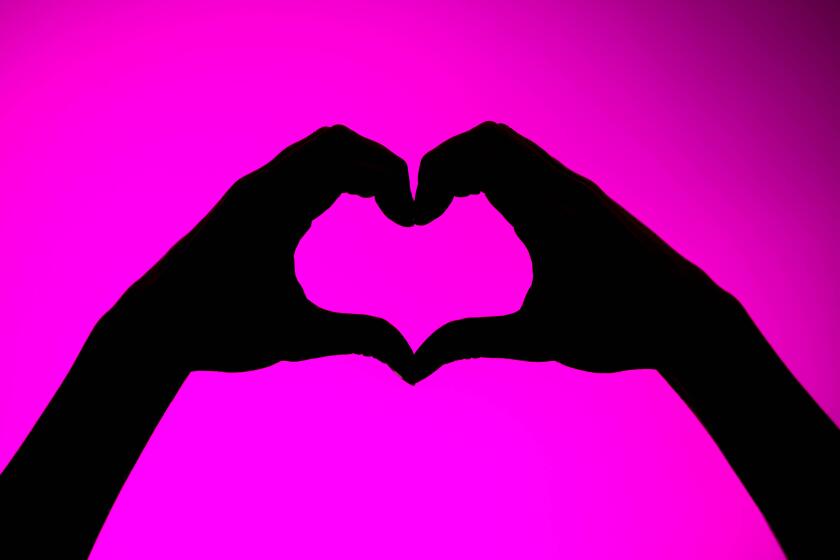Op-Ed: Body positivity has boomed. But thinness never went away
I remember the first time I walked into a United Colors of Benetton store when I was 12 years old at the Woodbury Commons outlet mall. The brand, which was all the rage in the 1990s, exemplified the epitome of chic for my tween self.
I went in and picked up a pair of their largest-size pants, pants I’m sure we couldn’t afford even on a discount and tried them on. I couldn’t get them over my hips. I was devastated.
I felt shame creeping over me, the hair rising on the back of my neck, as I walked out of the dressing room, unable to answer my friend when she asked how they fit. She was a size 6; she didn’t know the trauma of the dressing room, how one move could turn a good, positive shopping trip into an experience that made me want to hide.
The Kardashians have changed American beauty standards for the worse. Yet they remain a cultural force as their new “reality” show debuts.
A dynamic was established, one many women experience: Clothes were not meant to fit me; I was meant to fit into them. Women’s clothing dominated my sense of self, how I belonged and literally how I fit in. My relationship with my body became tenuous; it became an unruly artifact I would have to manage around, not one that I comfortably lived inside.
And I was hardly alone.
What is considered in vogue for women’s bodies has plagued us for generations. Consider the drop-waist boyish lines of the roaring ‘20s, the slim hourglass of the Golden Age of Hollywood, the androgynous “twiggy” in the ‘60s, the emaciated heroin chic in the ‘90s, or the most unattainable yet: a taut and sky-high derriere, narrow waist, large breasts and thigh gap a la Kim Kardashian.
Last year, trend forecasters and celebrities seemed to proclaim again, “thin is in.” Kardashian and her sister Khloe appear to have reduced the size of their butts; celebrities are rumored to take the diabetes drug Ozempic to get their weight down, and I just learned this week what buccal fat removal is.
Most would argue thin never really went out of style — while body positivity and fat inclusion have made strides in recent years with social media influencers, a few plus models being sent down runways, and Lizzo in all her glory — we are still pummeled with the pressure to be thin, or at least have a flat tummy. Even “plus” contorts to a specific type of figure, an hourglass, with a perfect hip-to-waist ratio, as did many of the procedures such as “BBLs” to attain the ideal figure of the last 10 years.
The shape of women’s bodies has always been subject to the ebbs and flows of cultural standards. And in nearly all cases, those trends become controls that have deleterious effects on women’s lives: eating disorders, fad diets, dangerous injections and surgeries. Not to mention the psychological effects that come with disliking the body you occupy, the social pressure to comply with rules your body may not be able to adhere to, and the anxiety, depression and self-hatred that come along with all of that.
But why do these unattainable standards exist, and why is it so easy to foist them upon us? Well, it’s complicated.
More than 30 years ago, Naomi Wolf wrote in “The Beauty Myth”: “A culture fixated on female thinness is not an obsession about female beauty, but an obsession about female obedience.”
Trainer Jillian Michaels is being slammed for asking why we celebrate Lizzo’s body as much as her music. “It isn’t going to be awesome if she gets diabetes.”
Through that lens, it’s not surprising that in a moment when women’s rights have been under attack — with the overturning of Roe vs. Wade in this country and in the fight for women’s autonomy in Iran — we are also seeing a reversion to a thin aesthetic, for women to minimize themselves, literally. In fact, a 2019 study found that the sexist push for women to reach beauty ideals intensifies as they become more successful, especially at work.
It’s hard to disentangle what is a trend, what is media saturation and what is our own desire. Many people find living up to their assigned gender ideals to be empowering. Influencers regularly flaunt their exercise regimen, makeup routine or fashion game, and we avidly follow and envy the results.
Cynics suggest these performances are a delusion, that there is no expression of the self, of gender without mediation from external forces — but they do make beautiful online content. And the reality is most women both capitulate to and embrace the culture’s body standards. It is impossible to separate what is imposed and what is our truest self-expression. And at some point, it doesn’t matter; the back and forth is the reality.
The unforgiving standards that are pushed on women — through the media, our social networks, our families, the fashion industry — alienate us from our bodies. Something that should be controlled within oneself is instead controlled by outside forces. Sound familiar?
Samhita Mukhopadhyay, a writer and editor based in New York, is the author of “Outdated: Why Dating Is Ruining Your Love Life.” She is the former executive editor of Teen Vogue and the co-editor of “Nasty Women: Feminism, Resistance and Revolution in Trump’s America.”
More to Read
A cure for the common opinion
Get thought-provoking perspectives with our weekly newsletter.
You may occasionally receive promotional content from the Los Angeles Times.












